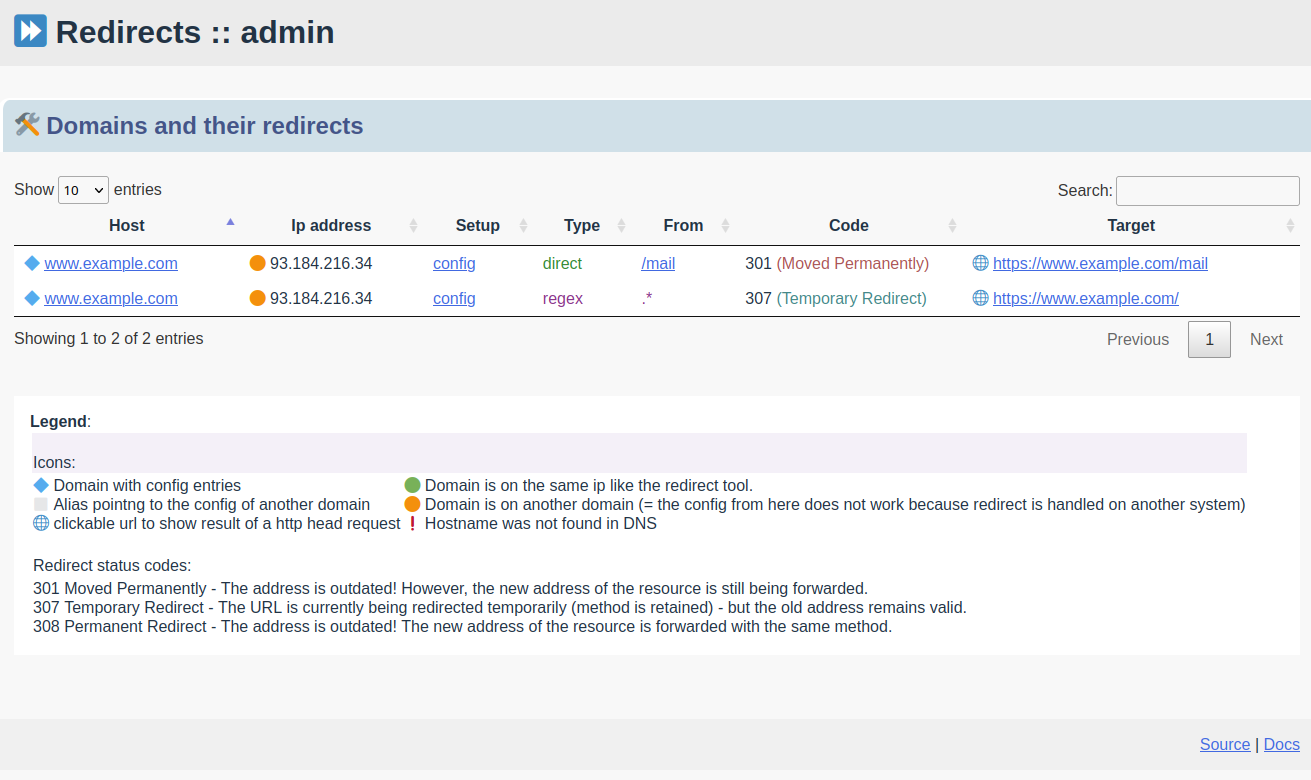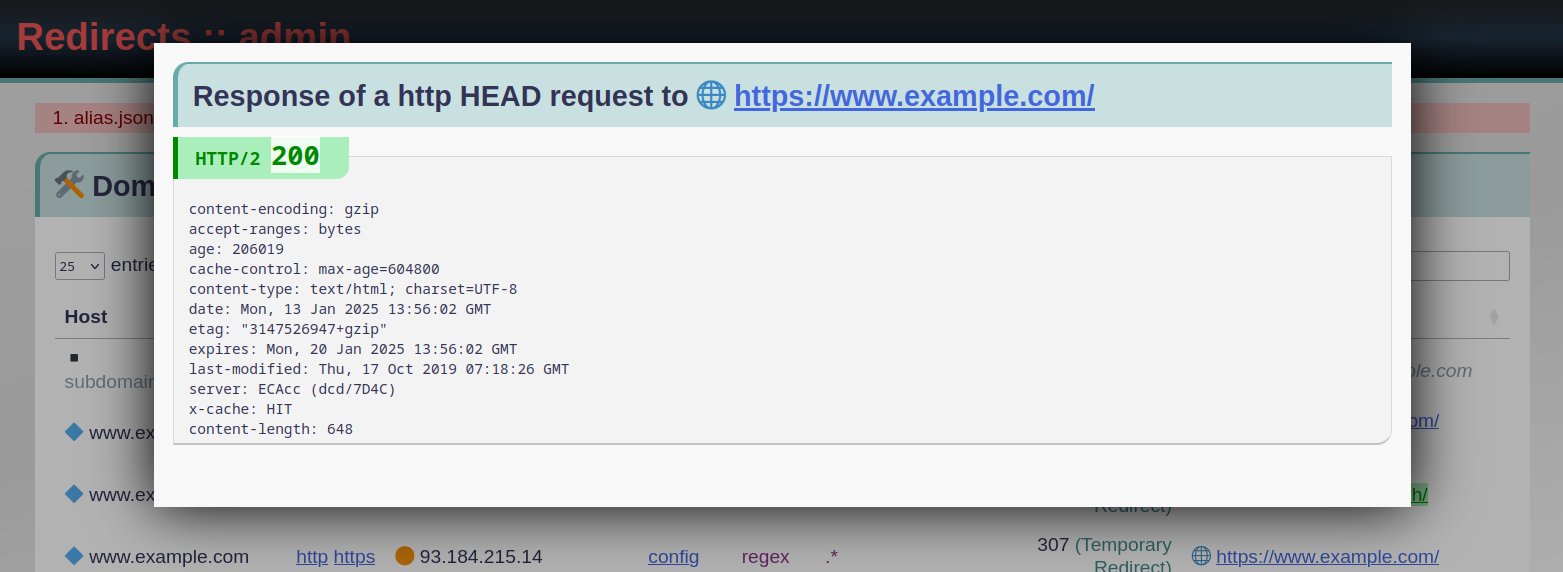Table of Contents
The web ui
The web ui is a viewer for the configuration with some additional help features:
- A check of the configuration shows you found errors.
- DNS check of a hostname
- live view of current http response header
- view configs
Enable web ui
By default the web ui is disabled.
In the classes folder you find a file classes/redirect.admin.class.php_enabled.txt.dist … just copy it to redirect.admin.class.php_enabled.txt (without “.dist”).
Then you can open /admin in your webbrowser, eg. http(s)://servername/admin/.
Domains and redirects
You get a list with all defined domains and its redirects + aliases.

In the table you see the columns
-
Host - the hostname/ FQDN that has a redirect rule
- 🔷 Domain with config entries
- ▪️ Alias pointng to the config of another domain
-
Ip address - the found ip of the fqdn.
- 🟢 green = domain is on the same ip like the redirect tool.
- 🟠 yellow = domain is on another domain (= the config from here does not work because redirect is handled on another system)
- ❗= Hostname was not found in DNS
- Setup - type of setup: one of config|alias
- Type - type of redirect: one of direct|regex
- From - source that will be redirected
- Code - http response code for redirection
- Target - target url
Test connection
You can click a link to a hostname, a linked redirect or target url. In an overlay window you get the status for the http test.
Http header
If click on the link of the host you get a live view of a response of a http HEAD request to the webroot of this domain.
The redirects of the type “direct” have a linked “From” field value. If you click on it you get a live view of the http response header of https://[Server]/[From].

If the connect failed there is no http response header to show. To get an idea what is wrong you get the curl error message. The you can estimate the problem - is it a missing DNS entry, a network problem, timeout, whatever.

Config
If you click on the linked text “config” you get the content of the config file for this domain with all its redirects.
If you click on the linked text “alias” you get the configuration of the domain that points to the alias domain.